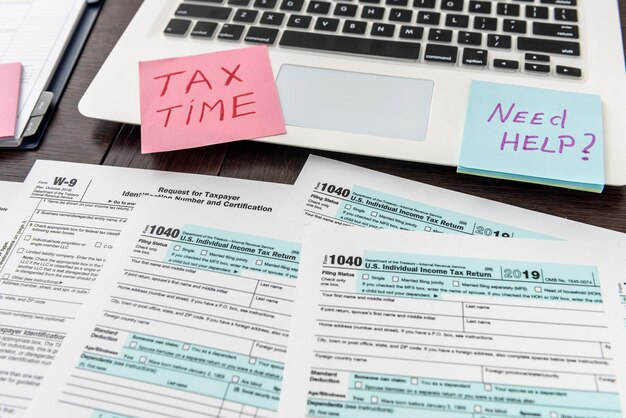What to Expect from Form 1040: A Comprehensive Guide
When it comes to filing taxes in the United States, the IRS Form 1040 is often at the heart of the process. Whether you're a seasoned taxpayer or filing for the first time, understanding what the 1040 form looks like and how to navigate it can seem daunting. With changes over the years and multiple versions to choose from, knowing exactly what to expect can make the annual ritual of tax filing infinitely more manageable. In this guide, we’ll walk you through everything you need to know about Form 1040, enhancing your familiarity and confidence with the process.
📝 Overview of Form 1040
Form 1040, officially named the "U.S. Individual Income Tax Return," is the cornerstone of individual tax filing in the U.S. It’s where taxpayers report their annual income to calculate tax liabilities or refunds. The form is essential for reporting details like:
- Personal Information: Such as name, address, and Social Security Number.
- Filing Status: Single, married, head of household, etc.
- Income: From all sources, including wages, dividends, and business income.
- Deductions and Credits: Which can significantly reduce taxable income.
- Refunds or Amount Owed: The end result after all calculations.
By the end of this section, you should have an understanding of the basic structure and purpose of Form 1040.
📐 Exploring the Structure of Form 1040
H2 Basic Components of Form 1040
The official Form 1040 is a two-page document, though many filers will attach additional schedules as needed. Here’s a breakdown of its layout:
Personal Information
On the top of the first page, you'll find fields for personal data such as:
- Name and Address: Ensure this is accurate and up-to-date.
- Social Security Number: Vital for identity verification.
Filing Status
Next, you’ll select your filing status. This impacts your tax rate and eligibility for certain deductions:
- Single
- Married Filing Jointly
- Married Filing Separately
- Head of Household
- Qualifying Widow(er)
Choosing the correct status is crucial for tax calculation precision.
Income Section
Here, you report all income sources:
- Wages: Typically from your W-2.
- Interest and Dividends: Detailed in additional schedules if needed.
- Business or Rental Income: Requires additional forms.
Including all income sources ensures accurate tax calculation.
Deductions and Adjustments
This section helps you account for any reductions in taxable income:
- Standard Deduction vs. Itemized Deductions: Choose the most beneficial.
- Adjustments to Income: Such as student loan interest or retirement contributions.
Selecting the best deductions can lower your taxes significantly.
Tax and Credits
Calculate the taxes you owe with:
- Tax Computation
- Tax Credits and Other Payments: Like the Earned Income Credit or Child Tax Credit.
Leveraging credits can dramatically alter your tax outcome.
Refund or Amount Owed
Finally, you'll determine your tax rebate or remaining balance:
- Refunds: Direct Deposit or Check options.
- Amount You Owe: Payment options are provided.
Understanding the final balance is a critical endpoint of the filing process.
🔍 Delving Deeper: Schedules and Attachments
While Form 1040 itself is just two pages, it often functions as a summary, requiring additional schedules and attachments for more complex situations. Let's explore these features:
H2 Additional Schedules
Experts suggest that common additional schedules include:
- Schedule 1 (Additional Income and Adjustments to Income): Captures earnings from things like gambling or cancelled debt.
- Schedule 2 (Additional Taxes): Covers AMT (Alternative Minimum Tax) and excess advance premium tax credit repayments.
- Schedule 3 (Additional Credits and Payments): Includes credits for education, energy savings, or prior year minimum tax.
H2 Specialized Forms
In some cases, you may need to complete additional forms, like:
- Schedule C: For profit or loss from a business.
- Schedule E: For rental real estate, royalties, partnerships, and S corporation interests.
Understanding these tools can help tailor your tax filing accurately.
🤔 Tips and Tricks for Navigating Form 1040
Filing taxes can be complex, but these tips might simplify the process:
- Organize Financial Documents Early: Gather W-2s, 1099s, investment statements, etc., well before tax season.
- Consider Software or Professional Help: Tax software can guide you step-by-step, and professionals can provide specialized advice.
- Double Check for Errors: Ensure all figures and information align to avoid potential audits or amendments.
Form 1040 expands into numerous directions based on personal financial situations. Being prepared can vastly improve the experience.
📊 Visual Summary: Key Points to Remember
Here’s a quick, emoji-enhanced bullet-point summary:
- 📄 Two-Page Form: Covers all essential tax information.
- 📚 Additional Schedules: Necessary for complex financial situations.
- ❗Key Sections: Personal info, income, deductions, tax credits.
- 💡 Tips: Prepare documents, use software, review carefully.
🌟 Final Insights
Understanding Form 1040 is a stepping stone towards mastering your personal tax filing responsibilities. Whether you're filing on your own or with professional assistance, being informed about what this crucial document involves empowers you to make better financial decisions and ensures compliance with tax laws. Each component of the form and its supplementary schedules opens a window to potential benefits, deductions, and obligations, painting a complete picture of your economic year.
In embracing this knowledge, you not only demystify a crucial aspect of financial management but also unlock more possibilities for tax efficiency and improved financial health, making filing less of a chore and more of an opportunity for smart planning.
